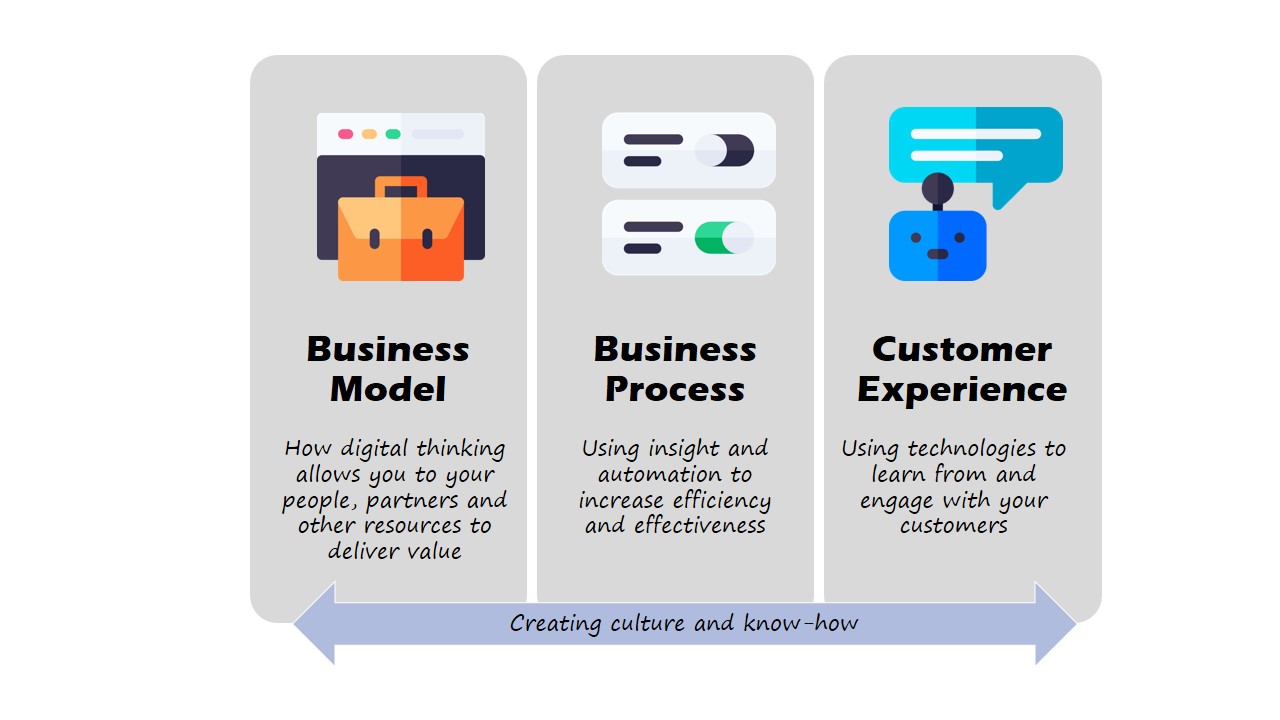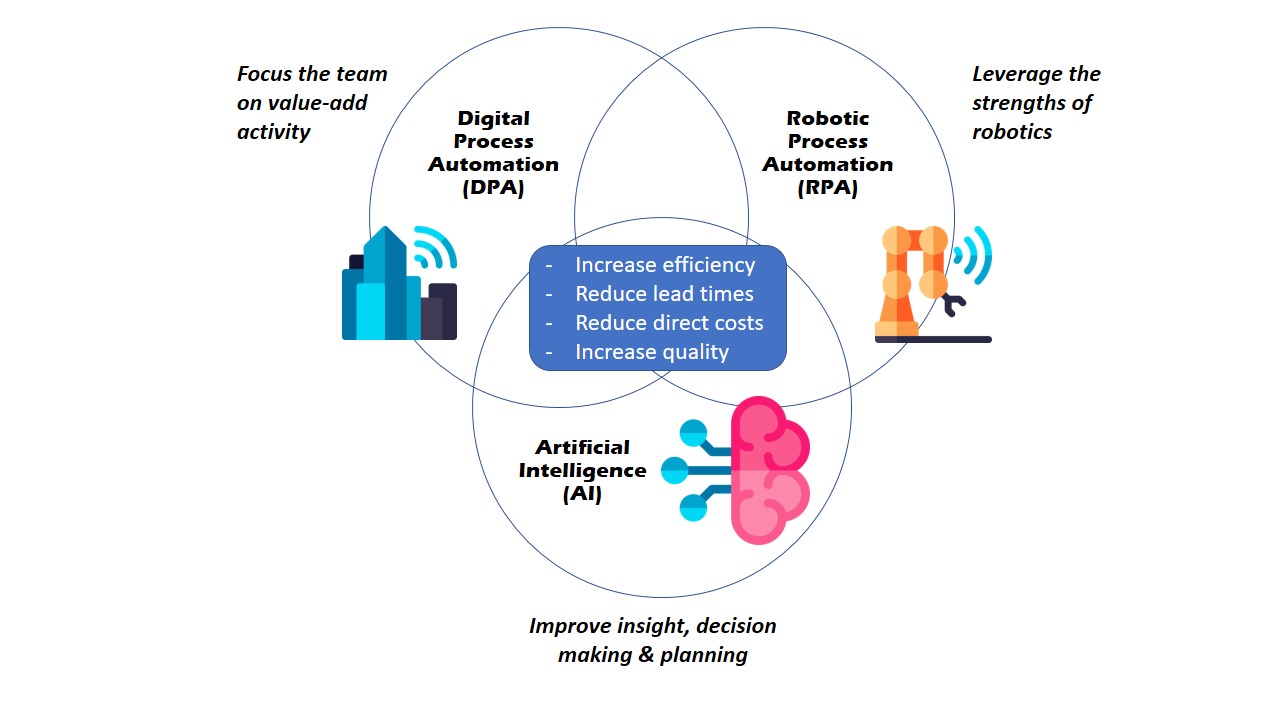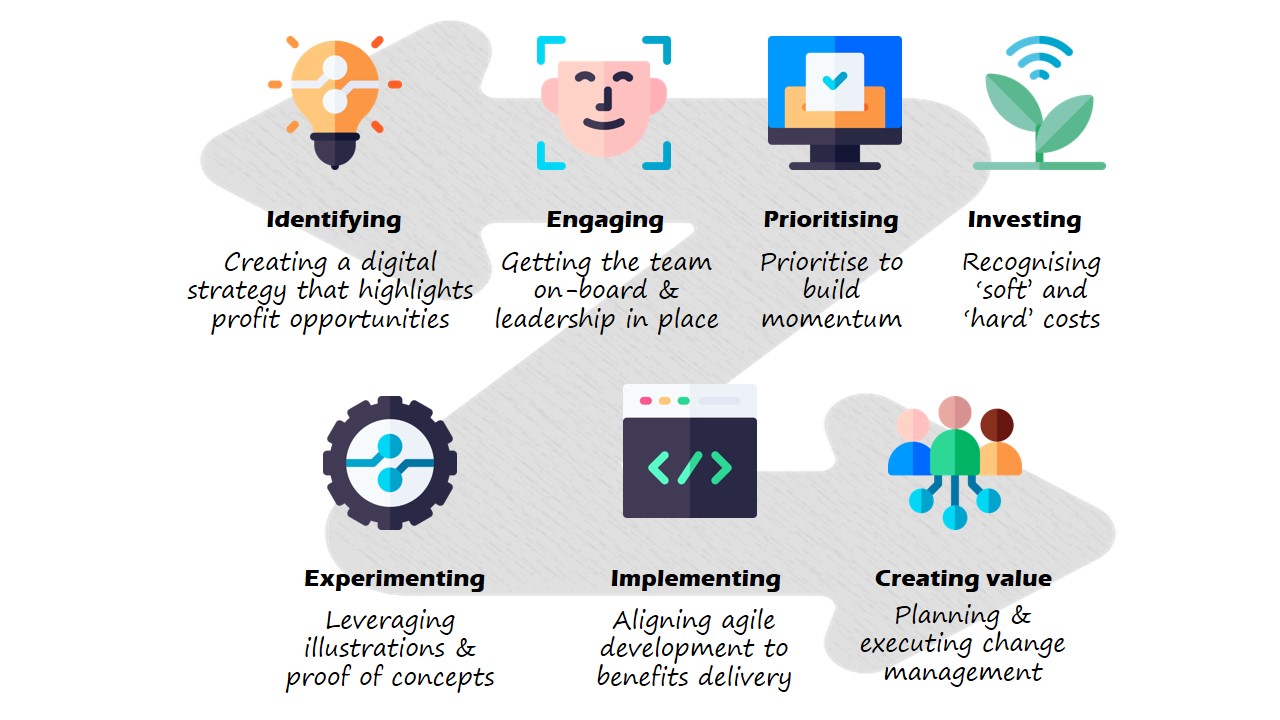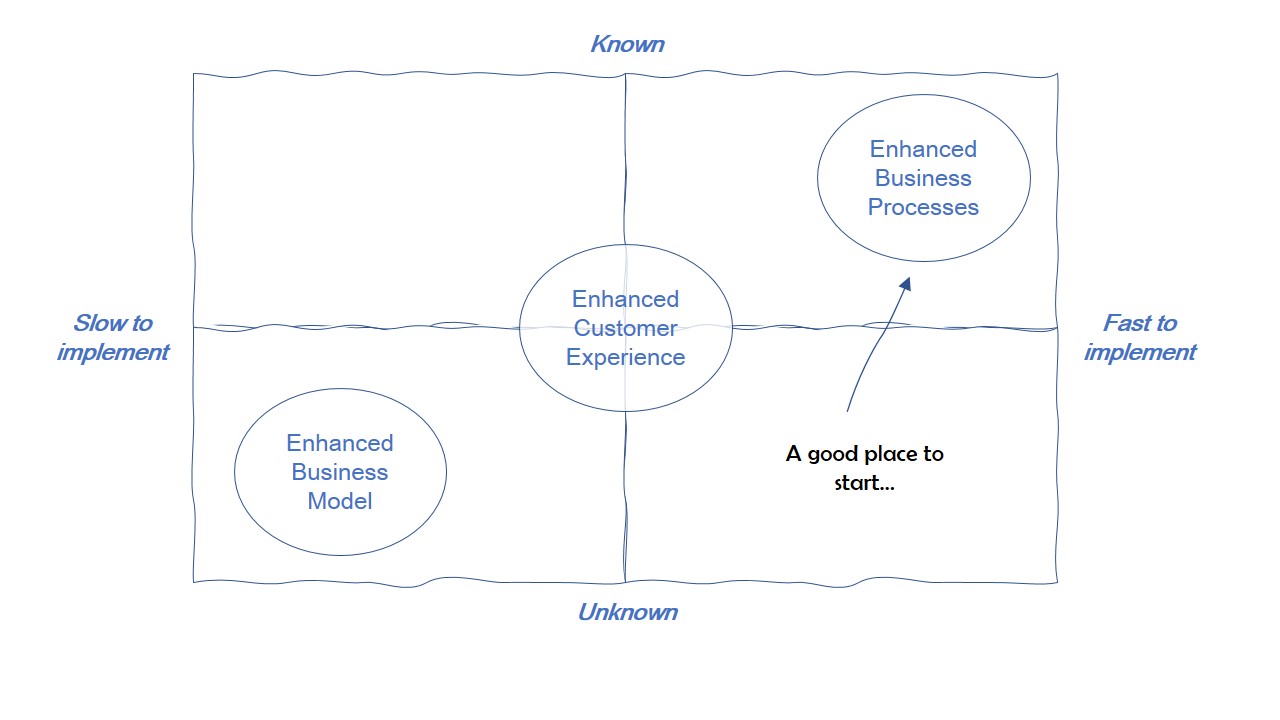
The 3 pillars of digital transformation
- 10 min read
Digital transformation is the process of unlocking profit by engaging the right digital and technology solutions across the business. Whether considering what you do, how you do it or who you do it with – digital transformation is concerned about how digital capability can make a difference.
Where do digital opportunities lie?
There’s a lot of jargon that surrounds the world of digital and the business opportunities. If you are at the start of the journey, then the first challenge is cutting through the hype to find the right opportunities to explore.
At top level, using digital to enhance your business can be viewed through 3 different perspectives. These address the ways that you:
A successful digital transformation program typically requires a positive and flexible mindset towards change across the organisation, a constructive cross-functional way of working, and a deeper general understanding of technology. It may require a move to become less risk-averse. In total, these elements are considered 'cultural change' requirements.

These pillars drive value from enabling better decision making (more informed, faster, better outcomes), reduced costs (reduced labour, increased visibility, reduced cost-to-serve), enhanced customer engagement (new products / services, increased share of customer spend, increased switching costs, and greater retention) and improved employee satisfaction (increased retention and productivity).
Business model opportunities from digital thinking
Business model opportunities are a combination of traditional strategic and digital thinking: understanding how you can use digital to leverage what you do best / do differently (your core competency). This might result in new products, new channels, new pricing mechanisms, or new ways of structuring the business.
“We’re about to change the ride just like Apple and all the smartphone companies changed the call. I believe when that happens, when you can ship a lot of software to their car, and you have great sensors, really change that experience and be a lot more productive, there will be a large revenue expansion.”
In the table below, we’ve identified some ways that existing business models may be extended with digital thinking.
| Business Model | Key Levers - traditional | Indicative digital opportunities |
|---|---|---|
| Retail | Revenue from placement, sales | New sales channels (eCommerce), affiliate sales, on-line advertising |
| Manufacture | Innovation, design, economies of scale, brand premium | Direct to consumers sales channels, new services, digital brand building, usage based pricing |
| Fee for service | Time spent with customer / on projects, retainers | Virtual client engagement, AI assisted proposals and delivery, subscription services |
| Subscription / Freemium | Recurring revenue | n/a - typically digital companies |
| Marketplace | Transaction fee | New services (based on additional information) |
| Razor blade | Low margin initial sales, high margin subsequent (or vice versa) | Subscription services, Direct to consumer |
Illustrative examples in business model thinking


Business Process opportunities from digital thinking
Digitalisation of business processes can be viewed as the next step in traditional operational excellence programs. However, it is not merely the introduction of robotic automation, or digitalised sign-off processes: it provides end-to-end opportunities to apply lean thinking across your organisation – and into your supply chain.
With an estimated 60% of all occupations having 30% of activities that can be automated, it's not surprising that 80% of executives have increased spending on digital business initiatives in 2022.
Gartner (amongst others) describes this opportunity as one of ‘Hyperautomation’.
“Hyperautomation involves the orchestrated use of multiple technologies, tools or platforms. Examples of these include AI, machine learning, event-driven software architecture, robotic process automation (RPA), business process management (BPM)/intelligent BPM suites (iBPMS), integration platform as a service (iPaaS), low-code/no-code tools, packaged software, and other types of decision, process and task automation tools.”
Microsoft have a slightly simpler definition and explain the opportunities in terms of Digital Process Automation, Robotic process automation and artificial intelligence. We’ve summarised Hyperautomation from this perspective in the diagram below. In essence, we see the focus as driving overall effectiveness of business processes.

Two parallel activities making this approach to business improvement more accessible: the emergence of complex capability on the cloud that can be implemented through APIs at very low cost, and the rise of low-code / no-code solutions and the development of the ‘citizen programmer’ – that removes the bottleneck of software developers, although generating a requirement of a new type of governance.
To provide an example of cloud capability, with Microsoft Cognitive Services you can convert spoken text to speech, analyse the sentiment of the text, and then act on the outcome. You can deliver conversational (natural language) based interface for customers or employees to help surface data and solve problems. They provide customisable image recognition (or face recognition) which can be used to enhance business processes. All of this capability would have been out of the reach of small to medium sized businesses 5 years ago – but now have a much lower cost to implement.
Customer Experience opportunities from digital thinking
Digital transformation of the customer experience can be looked at in terms of offer and execution.
Digitalisation of the offer
The offer perspective looks at the end to end experience, and identifies new ways to identify, build relationships and engage with customers. In other words, it explores how to create a better, more personalised, more cost effective experience using the right technology.
One demonstration of how digital experiences can be enhanced is in the growth of 'try-on-tech' capability. This is software that can be integrated into a website to give a personalised retail experience.
A good example is in the eye-wear or 'glasses' market, where there is innovation in helping people select frames without visiting the retail store. Viewed as a basis for establishing a relationship and building a campaign, as well as to fulfill a transaction, this is a classic example of leveraging digital opportunities. This approach was originally pioneered by Warby Parker and is now widespread. If you compare the Boots experience to the SmartBuyGlasses experience below, you will get a sense of the opportunity to digitalise your offers.


Digitalisation of the marketing execution process
There has been an explosion of marketing technology platforms to support the marketing process – with an estimated 8,000 solutions available following a 5000% growth in the sector in the past 10 years. To give a sense of the breadth of coverage, here are some established packages that address the key steps in the marketing process:
Delivering digital transformation doesn’t have to be linear
The key activities of digital transformation cover identifying, engaging, prioritising, investing in, experimenting, implementing and creating value from digital opportunities
In reality, this isn’t necessarily linear – particularly for small / medium sized businesses. In this case, a specific project may be chosen to build momentum and then used as an ‘anchor’ to build out further thinking and activity.

There are a number of approaches to help find potential opportunities. These are outside the scope of this paper
Once you have identified potential projects, the challenge is to decide on prioritisation. Given the need to build momentum, we recommend that the first priority is to identify opportunities that have the lowest risk and that will deliver demonstrable value in the short term.
Ranking a project by how well known is the context of the opportunity - that is how many of the processes / users / benefits are fully understood, can enable a quantitative assessment of the level of risk. Equally, discussions about how long it would take to implement allow project complexity and the challenge of effecting change be considered at the start. In combination, this provides a good starting point to select your first project.
The prioritisation matrix below highlights that typically – given these criteria – the starting point will be found in projects related to the automation of business processes.

You’ll note that we don’t suggest the usual criteria of ‘complexity’ vs ‘size of impact’ as criteria, as there is a tendency to underestimate project complexity, and to attempt to model value realisable too early in the process.
The learnings from the initial project then feed into a wider program, which defines the strategy and the delivery approach.
Conclusion
Digital Transformation offers significant opportunities to any size of business. Much of the language, thinking and actions to support transformation are a continuation of traditional business strategy and planning. As such, Digital Transformation can be seen as a catalyst for business change.
Like, traditional programs, the critical success factor is the management of that change: getting the team on-board, adapting the culture as required, introducing new behaviours and practices, and demonstrating commitment to the end-game from the senior team.
Digital | Divisor is a specialist in Digital Transformation - uniquely placed to cross the divide between business and technology thinking.
Digital | Divisor
We are a specialist innovation business with a unique way of delivering projects. If you have any questions, please get in touch. We'd love to hear from you.